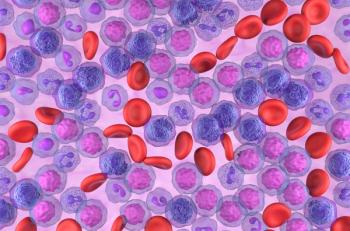
Community Oncology Practices Poorly Implement Breast MRI Screening Guidelines
A recent analysis from the Breast Cancer Surveillance Consortium revealed that community oncology practices are neglecting to use MRI screening for at-risk women, and lower-risk women are being unnecessarily screened.
Community oncology practices are poorly implementing professional organizations’ MRI screening recommendations for women who face both a high and an average or low lifetime risk for breast cancer, according to an analysis of Breast Cancer Surveillance Consortium (BCSC) data. The findings were
MRI breast screening has improved breast cancer detection rates at earlier disease stages, before regional lymph nodes have become involved. The American College of Radiology, the American Cancer Society, and the Society of Breast Imaging all recommend that women who are deemed to have a 20% or higher lifetime risk of breast cancer-such as those with a family history of breast cancer-undergo MRI scans in addition to mammography. The American College of Physicians recommends not using MRI breast screening for women who face an average risk of breast cancer.
But at-risk women are not routinely undergoing MRI for breast cancer screening, and lower-risk women are being unnecessarily screened, according to Deirdre A. Hill, PhD, of the University of New Mexico Comprehensive Cancer Center in Albuquerque, and coauthors.
“Breast MRI use that is not concordant with guidelines, as documented in this study, poses distinct challenges to effective resource allocation in breast cancer screening,” said Hill in a press release.
Nearly 83% of breast screening MRIs are administered to women with a lower than 20% lifetime risk of breast cancer-a population not recommended to undergo MRI screening.
The research team assessed supplemental MRI screening utilization rates using data from five regional BCSC imaging registries. Among the 348,955 women represented in the registries who had received a mammogram between 2007 and 2014, 1,499 had also undergone a screening MRI scan.
MRI screening rates were higher among women at low or average lifetime breast cancer risk who had extremely dense breast tissue (risk ratio [RR], 2.2; 95% CI, 1.7–2.8) compared with women with scattered fibroglandular densities or atypia (RR, 7.4; 95% CI, 3.9–14.3). MRI scan rates were also elevated among women at average or low risk who had atypia or lobular carcinoma in situ compared with those without proliferative disease (RR, 33.1; 95% CI, 18.0–60.9).
“Our data suggest that women with less than 20% lifetime risk based on family history, but who have high breast density, breast atypia, or lobular carcinoma in situ undergo MRI at many times the rate of other women, although the harms and benefits in this population are uncertain and the cost-benefit ratio may exceed established benchmarks,” concluded Hill. “Such women may not be at substantially increased risk of cancers missed by mammography and thus may not be the groups in greatest need or who would receive the greater potential benefit of screening MRI.”
Newsletter
Stay up to date on recent advances in the multidisciplinary approach to cancer.


















































































